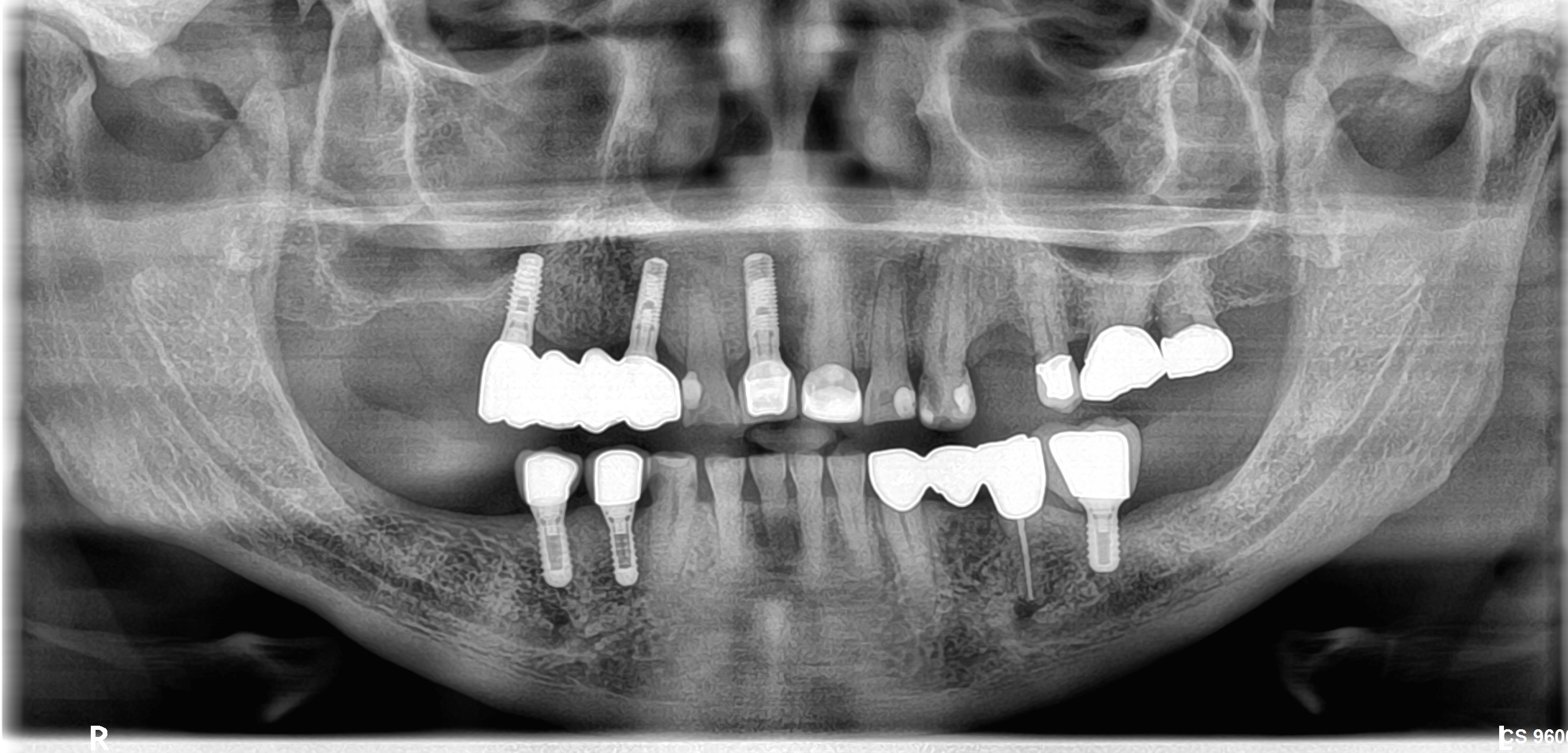Implant Grafting Challenge on Tooth with Failed RCT: Thoughts?
I am planning on placing an implant at site #30, which had failed root canal treatment. The tooth was extracted Feb 2018 and a bone graft was placed. There was significant bone destruction from the infection. The buccal plate is weak and the bone graft is not uniform. I am thinking to place the implant with an onlay putty graft, like NovaBone [resorbable calcium phosphosilicate bone substitute] and a membrane. What are your recommendations?





13 Comments on Implant Grafting Challenge on Tooth with Failed RCT: Thoughts?
New comments are currently closed for this post.
Shorty Doc
6/15/2018
Nice work up and presentation for your case. I have two concerns:
1. the CBCT scan, although it doesn't tell you exactly what the bone density is, shows radiolucency all around the proposed implant. I suspect that you won't get primary stability
2. the proposed implant size is too short. The platform of the implant will be too deep to restore. It should ideally be 3 mm below the adjacent CEJ. It looks way deeper than that in the mock up.
You could do the surgery and inform the patient that the implant might not be placed that day. If bone quality is bad, do traditional GBR. In this case, I personally would graft first and place the implant later. I know a second surgery sucks for the patient but it the result would be more predictable. It'll give you more options for placement and so maybe you won't have to go so deep to get your desired stability.
Richard Hughes DDS
6/15/2018
This is a perfect case for
the Osteogen(R) Plug.
Dr. Gerald Rudick
6/15/2018
Before you build a house or a building on soil that is questionable..... engineers will test the ground to make sure it is suitable to build on......
That said, my recommendation is to detoxify the infected site, wait a month or so before doing a bone graft to regenerated a suitable site...wait four months for the bone to fully mineralize, and then do the implant.
Rushing this procedure will lead to a failure, and an unhappy patient....do one step at a time, and check each step before you proceed with the next.
mickjw11
6/15/2018
Thx for your reply. Good advice. What do you mean by detoxify site?
G CABRAL
6/15/2018
the xrays show a black line between the graft and the bone suggestion a non union to the recipient site.Placing bone substitutes on the same day in infected sites is risky and fibrous tissue is the way progenitors cells choose to encapsulate what will be regarded as "foreign body".
I totally agree with Dr Rudick , and second stage grafting after extensive curettage of the site will give more chances of success; we can see a wisdom tooth on the radiograph and take advantage of the removal for autogenous bone procurement. Healing times are our allies but we must learn the patient to be patient for less re-dos and more success . Detoxifying the site means simply an extensive cleaning of the site ( curettage, lavage with sterile saline)and leaving the blood clot and cells make their job to remove remnants and toxins in the bone as much as possible.
dok
6/15/2018
If all 4 walls are intact ( even though the buccal wall may be thin /fragile ) gently currette, detox ( chlorhexidine ) and re-graft ( use a socket preservation protocol ). If there is a misssing bucal wall
also apply a membrane and then...... wait..... wait..... wait..... 6 months plus, then re-evaluate.
period
6/16/2018
Why wait to do the socket graft? When the tooth is removed, the cause of the infection is gone and with thorough socket curettage and rinsing with antimicrobial the site is made ready for healing and bone regeneration. This is the time to place a particulate allograft to serve as a framework for the host cells to repopulate and regenerate bone of adequate dimension for the implant. Then wait a full 6 months before placing the implant. Waiting a month after the extraction to do the grafting will also work well but it is an extra dental surgery for the patient to go through and recover from.
mickjw11
6/16/2018
Great insight here.....thanks!!!
Dr Malovatzky andy
6/18/2018
I would do all said above.
You also can use PRF and IPRF.
Good luck
Greg Kammeyer, DDS, MS
6/18/2018
When detoxifing: after curretting and irrigation, run a #8 round bur around the inside of the socket and irrigate again. This stimulates the bone to bleed > healing, release cytokines and cleans more minor tissue tags. That mesial root tip bone will be diseased.
Timothy J. Hacker DDS FAA
6/18/2018
An Osteogen plug or strip will work nicely in this case to reconstruct the buccal bone. Wait 4 - 6 months before placing the implant. It will be easy and primary implant stability will be predictable.
Ajay Kashi, DDS, PhD
6/26/2018
Once the site is disinfected and healed adequately (and considering that the buccal plate is not too stable) you may be able to place a blade type implant designed for a single tooth replacement in this case. You have to remember to place the implant sub osseous and most likely customize the restoration after healing.
saul berkowitz
6/27/2018
The patient payed alot for endo and crown. What happened? not a good practice builder or profession-prestige enhancer?
















